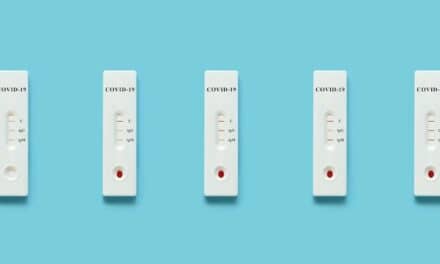Though not a new diagnostic technique, multiplex testing is poised to become the standard of diagnostic care in the post-pandemic world.
By Chris Wolski
Multiplex testing is nothing new, but has gained increasing interest and traction in the wake of the COVID-19 pandemic and the subsequent need for efficient testing regimens for a variety of different respiratory diseases that exhibit a range of similar symptoms.
In wide-ranging Q&A with CLP, Nikos Pavlidis, vice president/general manager Molecular Diagnostics & Women’s Health & Cancer, BD Integrated Diagnostic Solutions, discusses why multiplex testing is emerging as the standard of diagnostic care, what the end of the COVID-19 emergency will mean for tests approved as EUAs, and how AI will benefit clinical laboratories.
The following answers have been edited for length and clarity.
CLP: Multiplex testing, as I understand it, is not a new concept—why do you think it has gained traction now? Is it just because of COVID or are there other factors driving the need for multiplex testing?
Nikos Pavlidis: While multiplex testing has been around for several years, this year’s respiratory season has exhibited the value and utility of this technology. The current season has been very dynamic with RSV peaking early in the fall, influenza A, influenza B rapidly increasing in November and December, and SARS-CoV-2 increasing since mid-November, according to federal data. As these viruses have overlapping signs and symptoms, it is important to have a test that can identify rapidly the cause of the infection across these three very common pathogens to implement the appropriate treatment quickly.
CLP: Why, specifically, does BD think multiplex testing is a good direction to head in? Can you give an overview of your technology?
Pavlidis: At BD, we are seeing a shift from COVID-19 only testing to combination testing and firmly believe that this will be the standard of care moving forward. Combination tests will help eliminate the need for multiple tests or doctor’s visits and will also help to increase testing capacity during the busy flu/RSV season and speed up time to diagnosis.
Recently, we received FDA EUA authorization for a SARS-CoV-2, influenza A, influenza B, and/or RSV test on the BD MAX System. Our combination assays provide the ability to identify multiple pathogens using a single sample and can quickly pinpoint the causative virus or viruses and enable clinicians to administer appropriate treatment early in the course of infection. The BD MAX System is already in use at thousands of hospitals and labs worldwide, and each unit is capable of analyzing hundreds of samples over a 24-hour period.
In addition to the BD MAX System, we have also built a combination testing portfolio across our portfolio including BD COR System, a high-throughput diagnostic system for labs, and BD Veritor Plus System, a rapid diagnostic testing on a portable instrument for use at the point-of-care.
CLP: How will the move to multiplex testing affect at-home testing? Will the front line of diagnostic testing for certain diseases permanently move from the doctor’s office, clinic, or pharmacy to patients’ homes? Is this good news? Why or why not?
Pavlidis: We are moving toward a world where only the most complex or severe cases of infection enter an in-patient setting. This will reduce the burden on clinicians.
The COVID-19 pandemic empowered consumers and enabled them to better understand and manage their health. Today, people have become accustomed to community-based settings and at-home tests for COVID-19, laying the foundation for similar diagnostic options for other diseases.
At BD, we have seen a shift of diagnostics from traditional to new settings, including urgent care, surgery centers, retail clinics, and even in the home.
CLP: Switching gears a bit, with the coming end of the COVID emergency declaration, what will this do to the status of tests that were approved under the EUA? Will this affect access to testing?
Pavlidis: The expiration of the Department of Health and Human Services’ federal Public Health Emergency declaration does not revoke the EUAs for our products. The FDA will issue transition guidance and we will pursue regulatory 510(k) clearances for those products that continue to command market interest, both in the antigen and molecular testing modalities.
CLP: How does AI figure into the development of new clinical and at-home tests? What will this mean for labs and their patients? Will AI be able to act as a stop-gap for labs struggling with personnel shortages?
Pavlidis: AI can have a significant impact across many areas of testing by optimizing workflow, testing sequence, result interpretation and result augmentation. AI can also provide lab technicians longer walk-away times and allow them to focus their skills, attention, and expertise on more complex work. With these increased efficiencies, labs will be able to standardize quality, manage personnel shortages, increase their productivity, and expand their testing services.
Chris Wolski is chief editor of CLP.





